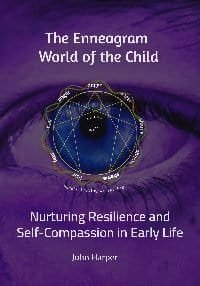What Neuroscience Reveals About Your Infant’s Brain

In The Enneagram World of the Child: Nurturing Resilience and Self-Compassion in Early Life, we explore the foundational years from birth to age six—those tender, turbulent, and formative seasons when a child’s personality begins to take shape in response to the emotional environment around them. These early moments are more than developmental milestones; they are the roots of how a child comes to understand themselves, others, and the world.
Language, emotion, and relationship are not separate threads but part of a single woven fabric—and neuroscience is now catching up to what many parents sense intuitively: that the way we speak, attune, and respond in these early years profoundly shapes the architecture of the child’s inner world.
Once dismissed as cute but inconsequential, “baby talk” is now at the center of some of the most exciting discoveries in developmental neuroscience. Far from being frivolous, the exaggerated tones, melodic rhythms, and slowed-down speech patterns that parents naturally adopt when interacting with their babies, known as infant-directed speech (IDS), are emerging as a core driver of language development and cognitive wiring in early life.
Infants Understand More Than We Think
A groundbreaking 2025 study revealed that by 15 months, babies can infer the meanings of new words from context alone, without the need for visuals. Even before they can speak, they’re already piecing together meaning from auditory input, using subtle linguistic cues to make sense of the world.
This implies that language development doesn’t begin with speaking—it starts with listening. And babies aren’t passive recipients; they’re decoding, predicting, and pattern-matching from the very beginning.
What Baby Talk Does
Infant-directed speech isn’t about dumbing things down—it’s about tuning in. Its exaggerated pitch, slower tempo, and clear enunciation do three powerful things:
- Capture attention – The musicality of IDS draws the infant’s focus like a magnet.
- Clarify structure – Prosody (rhythm and melody) helps babies detect word boundaries and sentence flow.
- Enhance bonding – The emotional resonance of IDS fosters attachment, which in turn deepens the learning relationship.
Neuroimaging studies have shown that baby talk activates stronger neural responses in infants’ brains than adult speech, directly correlating with better vocabulary outcomes. It’s as if the brain lights up more brightly when the speech is designed just for them.
Language Learning is Social, Not Just Sensory
Multiple studies have now demonstrated that early social interactions, including eye contact, vocal turn-taking, and smiling, have a profound impact on neural development. Infants learn best in the back-and-forth rhythm of responsive communication, not just from exposure to words, but through the relationship itself.
A 2024 University of Washington study even found that infants’ language growth could be predicted by the amount of neural activation that occurred during social interactions at just five months old.
Even Babies Have “Accents”
In a delightfully poetic turn, babies have been found to mimic the musicality of their environment, even exhibiting regional accents in their babbling. This reflects how deeply embedded language acquisition is in the prosodic (melodic) features of speech rather than just vocabulary.
The Myth That Baby Talk Slows Development
Some parents worry that using simplified or sing-songy language might hinder their child’s growth. But the opposite is true. Neuroscience affirms that IDS scaffolds the brain’s ability to process sound, segment language, and build an internal lexicon. What slows language down isn’t “baby talk”—it’s the absence of talking at all.
Neglecting verbal interaction, being distracted, or assuming babies “don’t understand yet” deprives the infant brain of the rich stimulation it craves.
Early Exposure Has Lasting Effects
Studies have even shown that babies exposed to a language in early infancy retain neural maps for that language years later, even if they stop using it. This means early language exposure imprints the brain in ways that remain accessible well beyond toddlerhood.
Implications for Parents
- Talk often, talk richly – Narrate your day, name things, wonder aloud. Even if your child can’t speak yet, they’re listening.
- Follow their cues – Infant-directed speech is most effective when it’s responsive. When the baby vocalizes or looks interested, that’s your cue to engage.
- Keep the rhythm – Emphasize melody, tone, and pause. It’s music with meaning.
It’s Not “Just Talk”
The science is clear: “baby talk” is an evolutionary tool, finely tuned to unlock the linguistic potential of the developing brain. Every coo, every singsong phrase, every silly back-and-forth is building the architecture for thought, communication, and understanding.
So next time you catch yourself stretching out a word or adding that lilting tone, you’re not being silly. You’re being a neuroscientist in disguise.
#parenting #babytalk #languagedevelopment #childdevelopment
